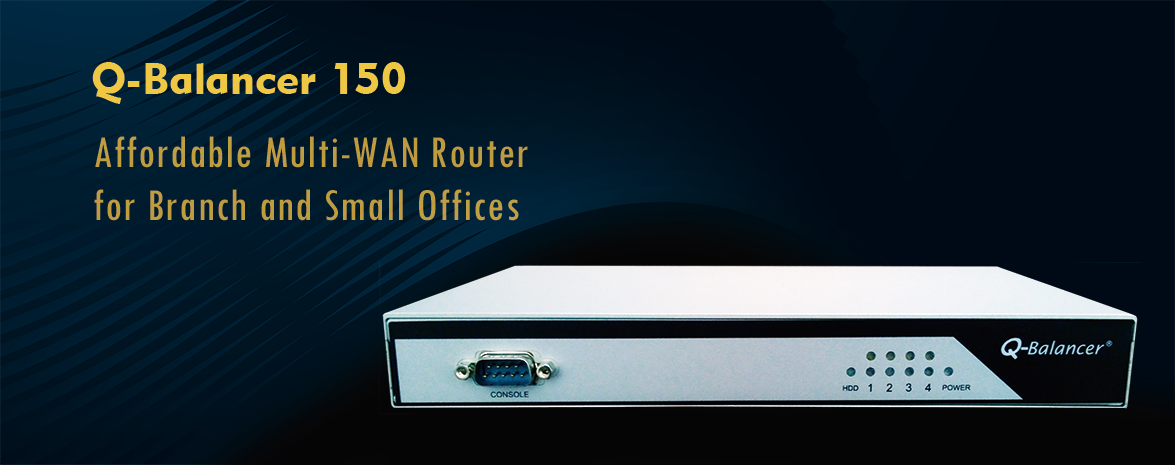Introduction
This article outlines how to select an object of Dynamic Path Selection (DPS) in the Q-Balancer to meet the various requirements. A DPS consists of selected WAN links, algorithm, and optionally backup DPS object. The load balancing algorithm decides how a Q-Balancer appliance distributes traffic across the selected paths in a DPS. The following outlines how they work:
> Failover
In case all WAN links in a DPS fail, a pre-defined Backup DPS will be activated and take over the task.
> Bi-directional Sensitive Weighted Least Traffic (BSWLT)
BSWLT distributes connections based on real-time total bandwidth availability. It measures total bandwidth (downlink and uplink) over the last mile, and dynamically direct new connections to the link with most available bandwidth.
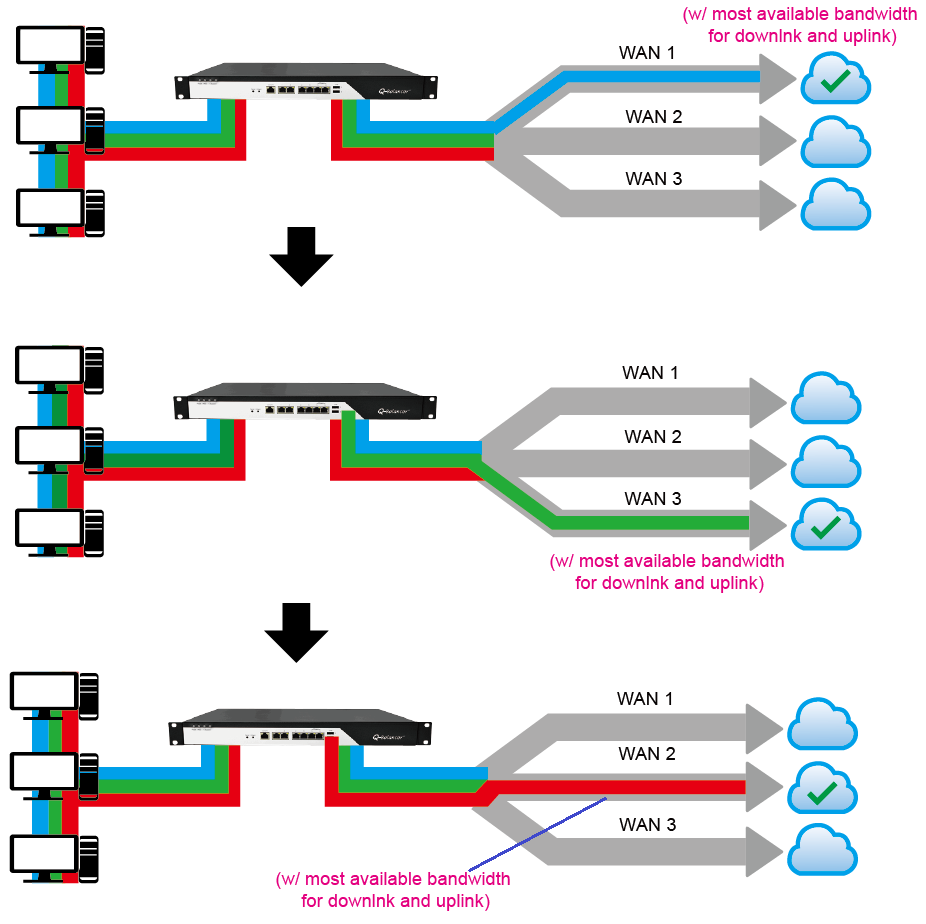
> Uplink Sensitive Weighted Least Traffic (USWLT)
USWLT distributes connections by real-time uplink bandwidth availability. It measures uplink bandwidth over the last mile, and dynamically direct new connections to the link, which has most available uplink bandwidth.
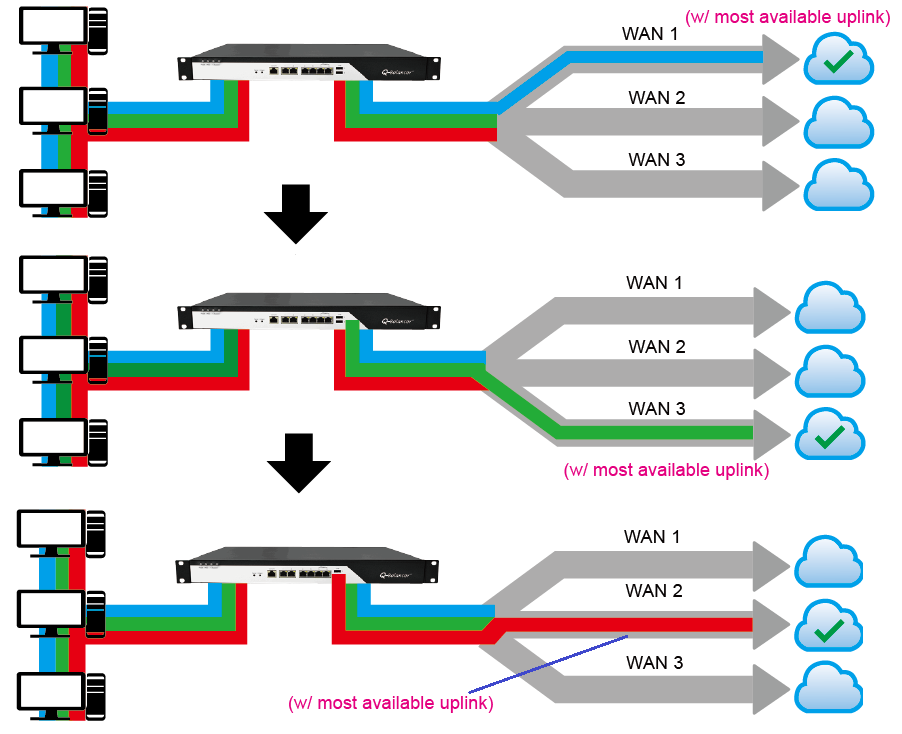
> Downlink Sensitive Weighted Least Traffic (DSWLT)
DSWLT distributes connections by real-time downlink bandwidth availability. It measures downlink bandwidth over the last mile, and dynamically direct new connections to the link, which has most available downlink bandwidth.
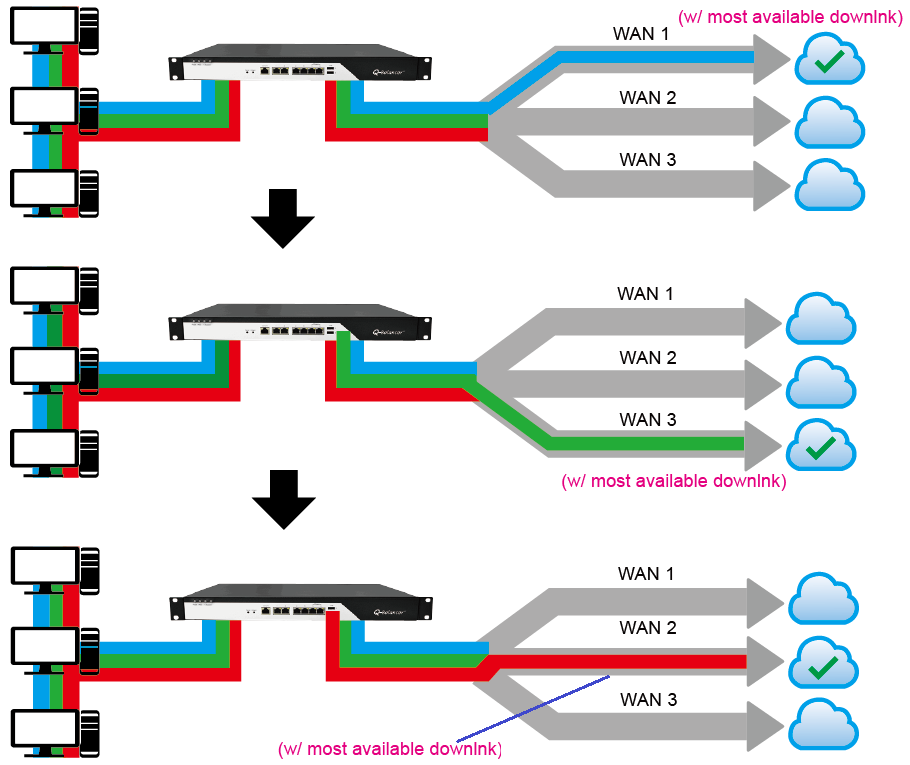
> ISP Response Time (IRT)
IRT directs connections to the internet via the path with least response time. The inbuilt function of path monitoring keeps gauging the response time from target hosts. Therefore the appliance is able to dynamically find out the WAN link with least response time and direct new connections to it.
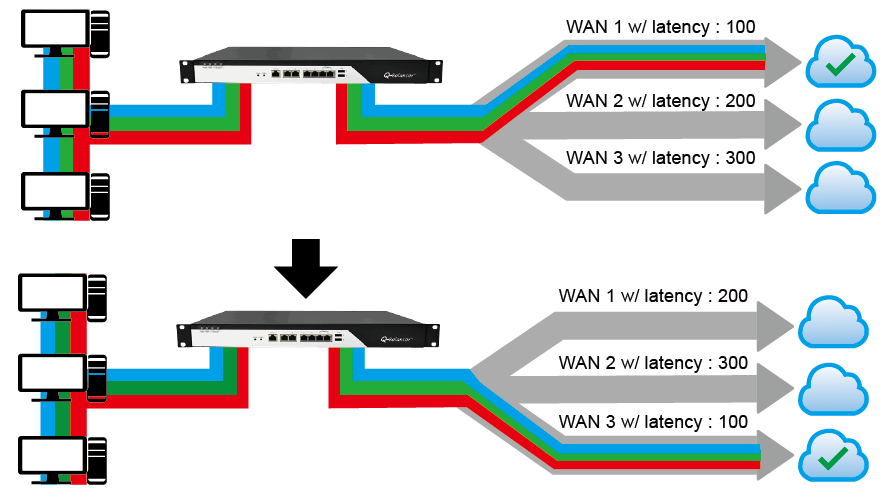
> Optimum Routing Path (ORT)
ORT distributes connections based on the conditions including real-time bandwidth availability, latency, packet loss, etc. ORT directs connections to the path with best combination of all parameters.
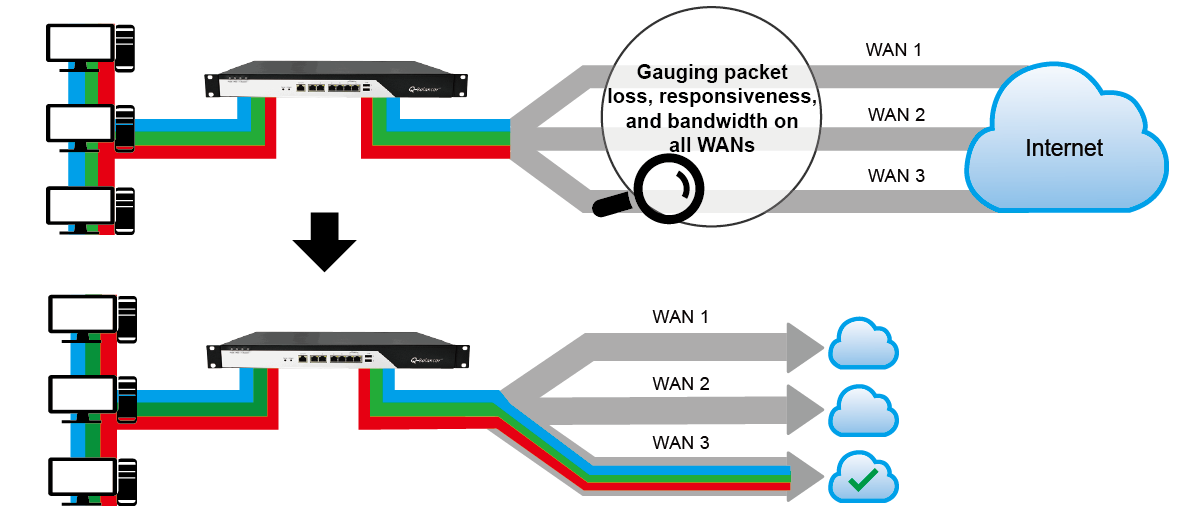
> Priority
Priority distributes connections based on the priority predefined on WAN links. It directs connections to the path with lower priority only when the primary link fails. The algorithm consists of several levels of priority for users to choose.

> Redirect to Transparent Proxy
Redirect to Transparent Proxy directs connections to designated servers based on policy rules. For example, it can be applied to a network, where web proxy servers are hosted locally.
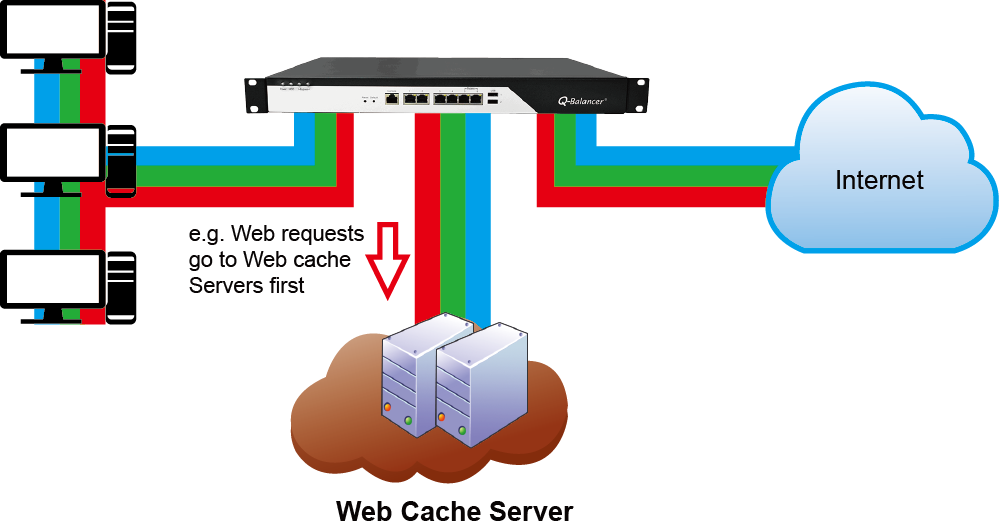
> Weighted Round-Robin by Connections (WRR by Connections)
WRR by Connections distributes connections to the selected WAN links in accordance with the weight, predefined on each of the WAN links respectively.
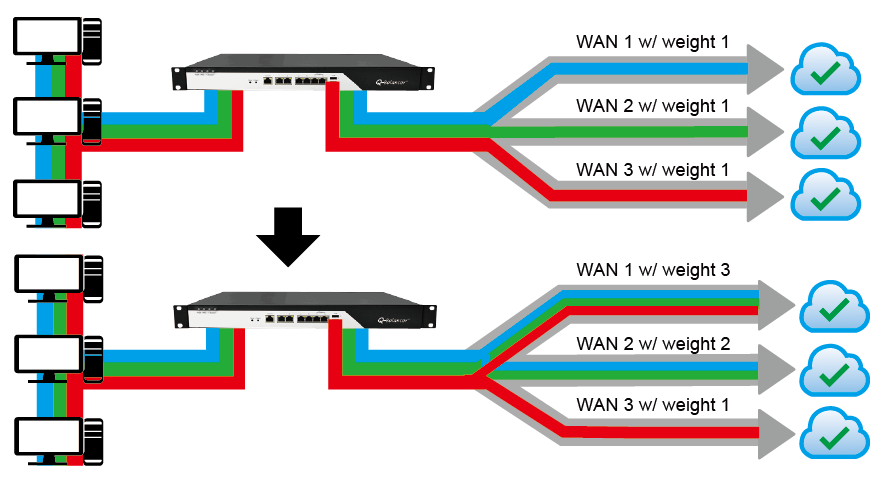
> Weighted Round-Robin IP Persistent (WRR IP Persistent )
WRR IP Persistent distributes traffic across the selected paths based on source IP address and weight predefined on each of the WAN links respectively. Meanwhile, the algorithm persists session traffic on the same path in a period of time.
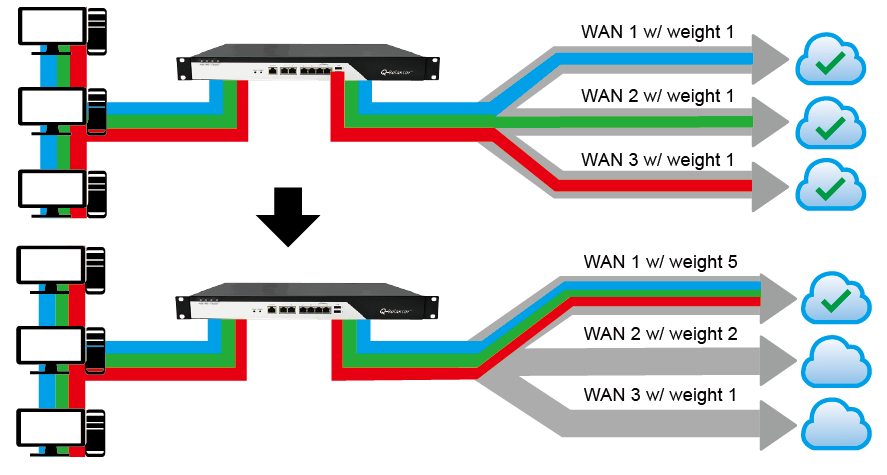
> Packet-level Load Balancing
Packet-level Load Balancing dynamically distributes traffic across multiple tunnels by packet. The algorithm logically combines bandwidth for multiple tunnels, and the combined bandwidth theoretically equals to the sum of all the individual connections. For example, 3 * 1Mbps internet lines would provide 3Mbps of total bandwidth.
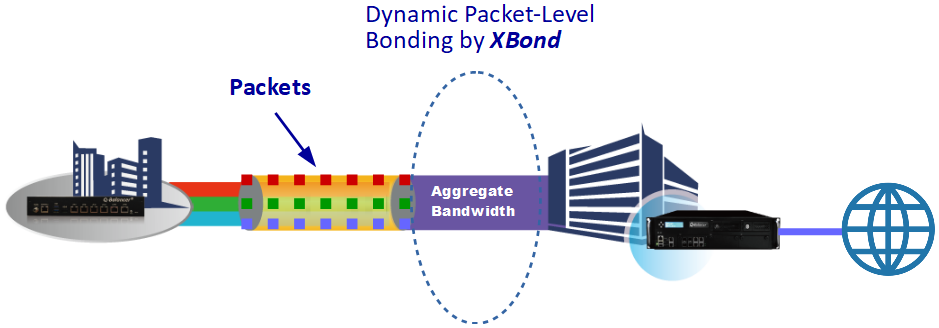
With the function of out load balancing enterprises are able to:
> Provide uninterrupted internet connectivity with link fault tolerance.
> Granularly define the policy rules to highly utilize bandwidth resources.
> Increase productivity by accelerating internet access for its employees.
Q-Balancer Inbound Load Balancing provides 5 different modes as follows:
> Available Bandwidth
Available Bandwidth directs the incoming requests to the hosted services via the link with most available uplink bandwidth.
> ISP Response Time
ISP Response Time replies the incoming requests to the hosted services via the link with least response time from the target IP.
> Priority
Priority directs the incoming requests to the hosted services via the link with highest priority unless the link fails.
> Weighted Round Robin by Connections (WRR by Connections)
WRR by Connections directs the incoming requests to the hosted services via the selected WAN links in accordance with their weights, which is predefined respectively.
> Failover
Failover automatically directs the incoming requests to the hosted services via the secondary WAN in case the primary WAN fails.
With the ability of inbound load balancing enterprises are able to:
> Provide the external users with a better user experience through the ability of inbound failover.
> Accelerate the access to the hosted services through load sharing across all available uplinks.




